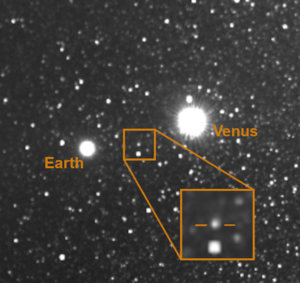Accept all cookies Accept only essential cookies See our Cookie Notice

About ESA
The European Space Agency (ESA) is Europe’s gateway to space. Its mission is to shape the development of Europe’s space capability and ensure that investment in space continues to deliver benefits to the citizens of Europe and the world.
Highlights
ESA - United space in Europe
This is ESA ESA facts Member States & Cooperating States Funding Director General Top management For Member State Delegations European vision European Space Policy ESA & EU Space Councils Responsibility & Sustainability Annual Report Calendar of meetings Corporate newsEstablishments & sites
ESA Headquarters ESA ESTEC ESA ESOC ESA ESRIN ESA EAC ESA ESAC Europe's Spaceport ESA ESEC ESA ECSAT Brussels Office Washington OfficeWorking with ESA
Business with ESA ESA Commercialisation Gateway Law at ESA Careers Cyber resilience at ESA IT at ESA Newsroom Partnerships Merchandising Licence Education Open Space Innovation Platform Integrity and Reporting Administrative Tribunal Health and SafetyMore about ESA
History ESA Historical Archives Exhibitions Publications Art & Culture ESA Merchandise Kids Diversity ESA Brand CentreLatest
Space in Member States
Find out more about space activities in our 23 Member States, and understand how ESA works together with their national agencies, institutions and organisations.
Science & Exploration
Exploring our Solar System and unlocking the secrets of the Universe
Go to topicAstronauts
Missions
Juice Euclid Webb Solar Orbiter BepiColombo Gaia ExoMars Cheops Exoplanet missions More missionsActivities
International Space Station Orion service module Gateway Concordia Caves & Pangaea BenefitsLatest
Space Safety
Protecting life and infrastructure on Earth and in orbit
Go to topicAsteroids
Asteroids and Planetary Defence Asteroid danger explained Flyeye telescope: asteroid detection Hera mission: asteroid deflection Near-Earth Object Coordination CentreSpace junk
About space debris Space debris by the numbers Space Environment Report In space refuelling, refurbishing and removingSafety from space
Clean Space ecodesign Zero Debris Technologies Space for Earth Supporting Sustainable DevelopmentLatest
Applications
Using space to benefit citizens and meet future challenges on Earth
Go to topicObserving the Earth
Observing the Earth Future EO Copernicus Meteorology Space for our climate Satellite missionsCommercialisation
ESA Commercialisation Gateway Open Space Innovation Platform Business Incubation ESA Space SolutionsLatest
Enabling & Support
Making space accessible and developing the technologies for the future
Go to topicBuilding missions
Space Engineering and Technology Test centre Laboratories Concurrent Design Facility Preparing for the future Shaping the Future Discovery and Preparation Advanced Concepts TeamSpace transportation
Space Transportation Ariane Vega Space Rider Future space transportation Boost! Europe's Spaceport Launches from Europe's Spaceport from 2012Latest

Extreme exploration with Solar Orbiter and Parker Solar Probe
Thank you for liking
You have already liked this page, you can only like it once!
ESA’s Solar Orbiter will be one of two complementary spacecraft studying the Sun at close proximity: it will join NASA’s Parker Solar Probe, which is already engaged in its mission.
Parker Solar Probe carries a smaller payload than Solar Orbiter but it goes closer to the Sun. Like Solar Orbiter, it too uses gravitational assist manoeuvres to plunge it closer and closer to the Sun. It already holds the record for the closest pass of the Sun. On 4 April 2019, it passed the solar surface at a distance of around 24 million kilometres, and this will only get closer during the 24 close encounters it is expected to have with the Sun. On the final three orbits of its nominal mission, Parker Solar Probe will pass within 6.2 million kilometres of the Sun’s surface, facing heat and radiation like no spacecraft before it.
Parker Solar Probe carries instruments to sample the Sun’s corona, and is targeting the region of space where the coronal plasma detaches to become the solar wind. This will give the scientists ‘ground truth’ about the conditions of the plasma in that region, and help pinpoint how it is accelerated outwards towards the planets. However, Parker Solar Probe has no cameras that view the Sun directly. No current technology could look at the Sun from that close a distance and survive. This is where Solar Orbiter comes in. Beyond accomplishing its own science goals, Solar Orbiter will provide contextual information to improve the understanding of Parker Solar Probe’s in situ measurements. By working together in this way, the two spacecraft will collect complementary data sets will allow more science to be distilled from the two missions than either could manage on its own.
Solar Orbiter is a space mission of international collaboration between ESA and NASA.
-
CREDIT
ESA–S.Poletti -
LICENCE
ESA Standard Licence

Parker Solar Probe’s view of Comet Leonard (annotated)

Parker Solar Probe’s view of Comet Leonard

Parker Solar Probe’s view of Comet Leonard

Parker Solar Probe















 Germany
Germany
 Austria
Austria
 Belgium
Belgium
 Denmark
Denmark
 Spain
Spain
 Estonia
Estonia
 Finland
Finland
 France
France
 Greece
Greece
 Hungary
Hungary
 Ireland
Ireland
 Italy
Italy
 Luxembourg
Luxembourg
 Norway
Norway
 The Netherlands
The Netherlands
 Poland
Poland
 Portugal
Portugal
 Czechia
Czechia
 Romania
Romania
 United Kingdom
United Kingdom
 Slovenia
Slovenia
 Sweden
Sweden
 Switzerland
Switzerland

























